Products
Products
Mercury analyzer
Milestone's DMA-80 direct mercury analyzer is designed to require no sample preparation and deliver results comparable to traditional techniques such as cold vapor atomic absorption and ICP-MS. According to the company, the analyzer provides results in as little as 5 min per sample and enables operators to analyze for mercury in virtually any matrix — solids, liquids and gasses. Milestone, Shelton, CT;

Deep-cooled InGaAs camera–detector
The Nunavut InGaAs camera–detector from BaySpec is designed to enable low light spectroscopy in the near-infrared region. Optimal cooling of the detector array reportedly allows for improved low-light spectral measurements and offers an improvement of >250× signal/noise performance. The camera–detector is available in 900–1700 nm, 1100–2200 nm, and 1250–2500 nm linear array configurations. BaySpec, Inc., San Jose, CA;
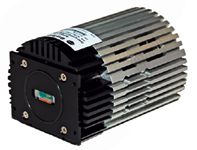
AA spectrometer
Thermo Fisher Scientific's iCE 3300GF compact atomic absorption (AA) spectrometer for dedicated graphite furnace analysis is designed for analytical applications including environmental, academic, clinical, and food safety analyses. According to the company, it offers guaranteed deuterium background correction and automatic optical set-up. The device includes an integrated furnace autosampler for preparing standards and intelligently diluting over-range samples, and an Ebert optical system. Thermo Fisher Scientific, Madison, WI;
www.thermoscientific.com/ice3300
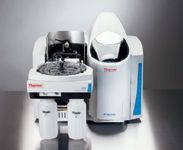
Ion-trap LC–MS system
Agilent Technologies' 500 ion-trap LC–MS system is designed for MS-MS analysis of chemicals, food- and product-safety testing, and other applications. According to the company, the instrument offers MS, MS-MS, and MSn capabilities, and can be operated with the company's LC products. Agilent Technologies, Santa Clara, CA;
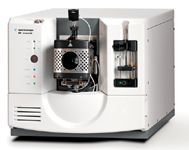
Preconfigured spectrometers
B&W Tek's preconfigured Glacier X miniature fiber-coupled spectrometers for designed for fluorescence and Raman spectroscopy applications. According to the company, the spectrometers' TE cooling allows the signal to be integrated for sufficient time to accumulate measurable signals for detection, without being saturated with dark noise. For fluorescence, spectrometers are configured with a 100-μm slit, a 350–1050 nm wavelength range, and a cylindrical lens. For Raman spectroscopy, the spectrometers reportedly include a 785-nm excitation source, have a wavelength range of 3215 cm-1 from the Rayleigh line, and a resolution of ~10 cm-1. B&W Tec, Inc., Newark, DE;
www.bwtek.com/raman-flourescence/
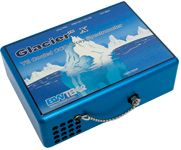
Chromatography software
ChromaTOF-GC 4.40 software from Leco Corporation is designed for use with the company's separation science instruments. The software reportedly integrates acquisition, data processing, and reporting features and includes features for compliance with 21 CFR Part 11 through three separate software additions (User Permissions, Electronic Signatures, and Audit Trail) Leco Corp., St. Joseph, MI;

LC system
The Agilent 1290 Infinity LC system is available with the company's Intelligent System Emulation Technology (ISET) feature, which is designed to enable the LC system to emulate other LC systems for transfer of methods between LC systems, regardless of brand. According to the company, the feature allows users to emulate other HPLC and UHPLC instruments with a mouse click. Existing 1290 Infinity LC systems reportedly are fully compatible with the system emulation feature and can be upgraded. Agilent Technologies, Santa Clara, CA;

Spectrophotometer technical literature
Schimadzu Scientific Instruments has completed a brochure, "Measurement of Transmission and Reflectance of PV Materials and Cells," for its UV-vis–NIR spectrophotometers. According to the company, the brochure explains the role of the company's SolidSpec-3700 and UV-3600 spectrophotometers in the manufacture of solar cell materials, cells, and modules. It also offers two application notes detailing the spectrophotometric analysis of photovoltaics. Schimadzu Scientific Instruments, Inc., Columbia, MD;
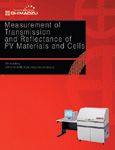
Photoluminescence instruments
Hamamatsu Photonics' Quantaurus compact instruments are designed for measuring the properties of photoluminescent materials. According to the company, the Quantaurus-Tau instrument measures fluorescence lifetimes as short as 100 ps, and the Quantaurus-QY instrument performs absolute measurements and requires no known reference samples. The instruments reportedly can be used to analyze materials in thin film, powder, solid, or liquid form, and liquid samples can be cooled down to –196 °C. Hamamatsu Phototonics, Bridgewater, NJ;
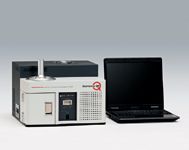
Glow discharge OES system
The GD-Profiler 2 RF glow discharge optical emission spectroscopy system from Horiba Scientific is designed to provide ultrafast elemental bulk, surface, and depth profile analysis. According to the company, the system utilizes controlled sputtering of a material by a 4-mm diameter plasma, analyzing all elements including gases (N, O, H, Cl) as a function of the depth in conductive or nonconductive layers and substrates. Samples of varying sizes and shapes can be measured. Horiba Scientific, Edison, NJ;
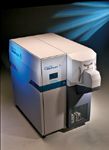
CW DPSS laser
Oxxius' SLIM-561-300 continuous wave diode-pumped solid-state (CW DPSS) laser is designed with optical characteristics that reportedly combine transverse mode (M2 less than 1.2) and pointing stability of less than 10 μrad over 3 °C. The 300-mW, 561-nm laser can be used in confocal Raman spectroscopy, SERS, holography, and laser Doppler velocimetry. The laser is available in an OEM version designed for integration and a "Plug & Play" CDRH-compliant version for laboratory use. Oxxius Inc., Santa Clara, CA;

FT-IR gas analyzer
Thermo Fisher Scientific's Antaris Industrial Gas System (IGS) is an FT-IR gas analyzer based on the company's Nicolet 6700 Fourier-transform interferometer and provides scan speeds as fast as 5 Hz at 0.5 cm-1 resolution.The analyzer reportedly is capable of monitoring dozens of gases simultaneously while providing accurate and fast multicomponent gas analysis. Applications include industrial analyses such as landfill methane analysis. Precalibrated gas analysis methods are available. Thermo Fisher Scientific, Madison, WI;
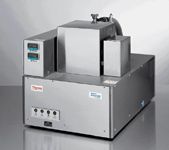
Scientific-grade ICCDs
Andor Technology's iStar scientific-grade ICCDs are designed to combine rapid acquisitions rates and ultrahigh sensitivity down to a single photon. According to the company, the detectors include high quantum-efficiency image intensifiers, thermoelectric cooling to –40 °C, 500-kHz photocathode gating rates, and enhanced intensifier EBI noise reduction. The detectors reportedly provide low jitter, low insertion delay gating electronics and nanosecond-scale optical gating for timing accuracy down to few tens of picoseconds, allowing precise synchronization of complex experiments through various input–output triggering options. Andor Technology, Belfast, Northern Ireland;
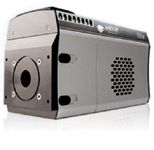
Consumer safety compliance standards
SPEX CertiPrep's consumer safety compliance standards are designed to help comply with new regulations being enforced to protect consumers from a variety of potentially dangerous chemicals and elements. According to the company, recent wordwide regulations restrict the levels of heavy metals in consumer products and waste electronics, as well as a variety of phthalates in children's products. SPEC CertiPrep, Metuchen, NJ;

ICP-OES system
PerkinElmer's Optima 8x00 ICP-OES system is designed to optimize sample introduction, enhance plasma stability, simplify method development, and reduce operating costs. The system's sample introduction feature is designed to generate a constant flow of uniform droplets for stability and detection limits. Its plasma generator reportedly uses half the argon of traditional systems, and a camera offers continuous viewing of the plasma. PerkinElmer, Waltham, MA;
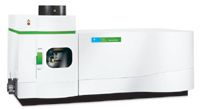
Holographic wire grid polarizers
Infrared polarizers from Optometrics are designed with submicrometer grid spacing produced using a holographic technique. According to the company, after exposing a photoresist coated substrate to monochromatic light, the resist has a regular sinusoidal profile, which is vacuum aluminized at an oblique angle to create an array of parallel conductors. The polarizers are available with a spacing of 2700 grooves/mm on ZnSe, CaF2, BaF2, KRS-5, and germanium. Optometrics, Ayer, MA;
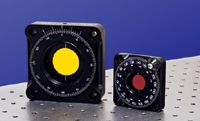
EDXRF spectrometer
Rigaku's benchtop energy dispersive X-ray fluorescence (EDXRF) spectrometer is designed to work as a compact elemental analyzer, delivering rapid quantitative determination of sodium to uranium in solids, liquids, powders, and alloys. According to the company, the spectrometer features an "icon-driven" touch-screen interface, along with a built-in printer. Options include fundamental parameters, an automatic sample changer, a sample spinner, and helium purge for enhanced light element sensitivity. Applied Rigaku Technologies, Austin, TX;
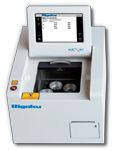
NIR spectrometers
Avantes' AvaSpec NIRLine dispersive, near-infrared spectrometers are designed to measure long wavelengths. The instruments reportedly come with toroidal focusing mirrors and dynamic dark correction. According to the company, the instruments can perform a variety of applications, including moisture content measurement, qualitative and quantitative measurement of volatile organics, plastic characterization, material identification, and irradiance measurements. Avantes, Eerbank, The Netherlands;
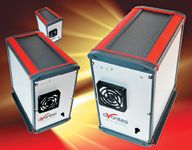
ICP-MS system
The aurora M90 ICP-MS system from Bruker Daltonics reportedly combines the company's CRI II collision reaction interface for interference elimination with the Nitrox 500 accessory to achieve lower limits of detection on elements such as As and Se. The system has an ion mirror and curved-fringe rods designed to provide high sensitivity (1 million counts/s for 1 μg/L), low background noise, and low detection limits. According to the company, the system can be used for environmental, food, and clinical applications. Bruker Daltonics, Billerica, MA;
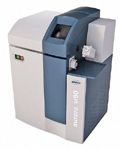
Mercury analyzer
The Model RA-3000F Gold+ mercury analyzer from Nippon Instruments Corporation is designed for EPA Methods 1631E and 245.7. According to the company, the instrument simplifies low to sub-ppt mercury analysis and reduces reagent consumption and wastes by as much as 80%. Nippon Instruments North America, College Station, TX;
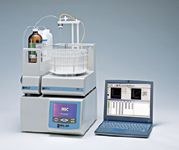
Infrared spectrometer
PerkinElmer's Frontier FT-IR spectrometer is designed as a modular and upgradeable platform for near-, mid-, and far-infrared spectroscopic analysis of samples such as polymers, chemicals, consumer goods, and pharmaceuticals. According to the company, the instrument's automated range changing capability allows the use of multiple techniques, and its optical system allows the addition of microscopy and imaging systems for detailed materials analysis. PerkinElmer, Inc., Seer Green, United Kingdom;
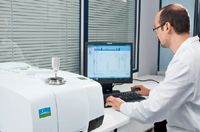
ATR accessory
Pike Technologies' GladiATR single reflection diamond ATR accessory reportedly has expanded temperature control options that can be configured for heating to temperatures as high as 300 °C. According to the company, the accessory can be used for high-temperature kinetic or material degradation studies. The accessory reportedly operates with the company's software and comprises reflective optics and a monolithic diamond for high throughput across the full mid-IR and far-IR spectral ranges. Pike Technologies, Madison, WI;
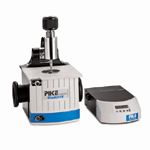
Raman analyzer
The EZRaman-1-9 portable Raman analyzer from Enwave Optronics is designed to minimize fluorescence and maximize capability of Raman analysis in difficult-to-measure samples. According to the company, the analyzer's excitation wavelength is above 900 nm. Enwave Optronics, Inc., Irvine, CA;
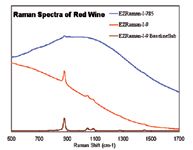
Raman microscope
Renishaw's inVia Raman microscope can be used for nondestructive testing of sperm DNA for assessing the healthiness of sperm cells. The instrument can be customized to integrate optical tweezing, which enables researchers to immobilize sperm cells with a tightly focused laser beam. The resulting Raman spectra contain information about the vibrations of molecules within the sperm cells and can be used to assess the state of its DNA. Renishaw, Hoffman Estates, IL;
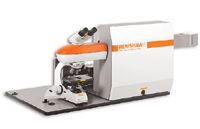
DNA quality control standard
Starna's DNA quality control standard is provided in a 1.5-mL liquid vial that offers the DNACON 260/280 reference material in format suitable for use in drop technology systems. The vial reportedly is produced in an ISO 17025 and ISO Guide 34 accredited environment and provides a NIST-traceable quality control standard. According to the company, the concentration is matched for use with ultralow volume and short-pathlength measurement systems. Applications include DNA purity evaluations in clinical and bioscience laboratories. Starna Cells, Inc., Atascadero, CA;
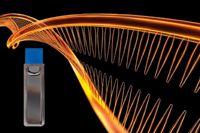
Silicon drift detectors
Amptek's Super silicon drift detectors are designed for XRF applications with OEM handheld instruments and benchtop analyzers. According to the company, the detectors have 125-eV FWHM resolution, an 11.2-μs peaking time, and a P/B of 8200 with an area of 25 mm2 and a silicon thickness of 500 μm. The detectors reportedly are contained inside the same TO-8 package and do not require liquid nitrogen. Amptek Inc., Bedford, MA;
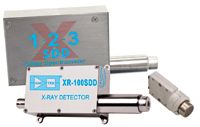
ICP liquid flow monitor
The TruFlo liquid flow monitor from Glass Expansion is designed to measure and digitally display sample flow rates for an ICP-OES or ICP-MS nebulizer. According to the company, the monitor can report when deviation from specified flow rates occurs or when problems such as worn pump tubing, a clogged nebulizer, or an improperly adjusted peristaltic pump occur. The system reportedly can provide an electronic record of sample flow rates for regulatory compliance. Glass Expansion, Pocasset, MA;
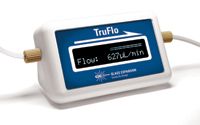
X-ray source
Moxtek's 50-kV monoblock X-ray source is designed for applications including handheld, portable, and benchtop instrumentation. According to the company, the source is a battery-operated, lowpower device that uses passive air cooling and delivers a high intensity flux of approximately 2 × 1011 photons/s/steradian/0.10 μA. The source reportedly weighs ~350 g and provides a variable energy output up to 50 kV, a maximum beam current of 0.20 mA, and a total power of up to 4 W. Moxtek, Orem, UT;
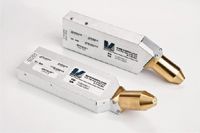
Topographic Raman imaging
WITec's True Surface Microscopy imaging mode is designed to allow large-area topographic coordinates from the profilometer measurement to be precisely correlated with the large-area confocal Raman imaging data. This option reportedly enables samples that would normally require extensive preparation to obtain a certain surface flatness to be automatically characterized as they are. According to the company, it allows scan ranges as large as 50 mm × 100 mm with a spatial resolution of 100 nm vertically and 10 μm laterally. WITec GmbH, Ulm, Germany;
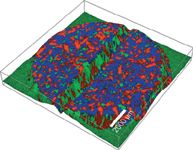
Immersion probes
Hellma's immersion probes are designed for use in fully automated tablet dissolution UV–vis analysis. According to the company, the probes have custom-built conical measuring heads and modified fiber-optic cables with five different optical path lengths available. Hellma USA, Plainview, NY;
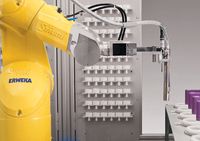
EDXRF spectrometer
The EDX-LE spectrometer from Shimadzu Scientific Instruments is an energy dispersive X-ray fluorescence spectrometer designed to screen elements regulated by RoHS/ELV directives. According to the company, the instrument incorporates automated analysis functions and a detector that does not require liquid nitrogen. Users reportedly can customize set-up functions according to management methods, set threshold values for each material or element, and change screening judgment according to the input method used for threshold values. Shimadzu Scientific Instruments, Columbia, MD;
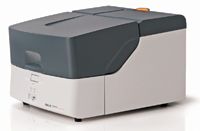
Raman system for inverted microscopy
The XploRA INV compact analytical Ramam chemical imaging microscope from HORIBA Scientific reportedly combines the automatization features and small footprint of a standard confocal Raman microscope with the capabilities of an inverted microscope for biological applications such as cell research, cancer detection, pharmaceutical verification of intercellular activities, inclusion of microreactors, and incorporation of AFM units for tip-enhanced Raman spectroscopy. According to the company, the microscope's open structure permits the use of options and add-ons for inverted microscopes, such as micromanipulators, "optical tweezers," and specific enclosures for cell applications. HORIBA Scientific, Edison, NJ;
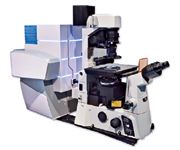
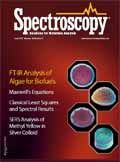
LIBS Illuminates the Hidden Health Risks of Indoor Welding and Soldering
April 23rd 2025A new dual-spectroscopy approach reveals real-time pollution threats in indoor workspaces. Chinese researchers have pioneered the use of laser-induced breakdown spectroscopy (LIBS) and aerosol mass spectrometry to uncover and monitor harmful heavy metal and dust emissions from soldering and welding in real-time. These complementary tools offer a fast, accurate means to evaluate air quality threats in industrial and indoor environments—where people spend most of their time.
NIR Spectroscopy Explored as Sustainable Approach to Detecting Bovine Mastitis
April 23rd 2025A new study published in Applied Food Research demonstrates that near-infrared spectroscopy (NIRS) can effectively detect subclinical bovine mastitis in milk, offering a fast, non-invasive method to guide targeted antibiotic treatment and support sustainable dairy practices.